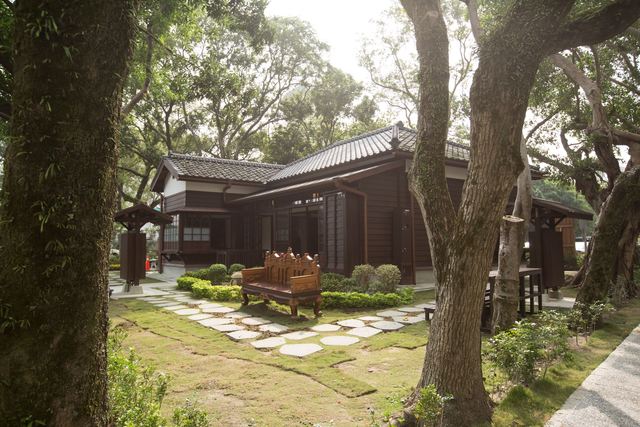Daxi Wood Art Eco Museum - Building One Introduction
Originating from the Nordic concept of "ecological museums," which advocates that "residents" are the core participants, it subverts the common stereotypes associated with museums. It is not only the first museum in Taiwan to incorporate "ecology" in its name, but also the first open-air museum established in western Taiwan, aside from Yilan and Kinmen. In Daxi, visitors can discover the historical snapshots of over two hundred years. The woodworking industry has roots here since the 1810s, and after two hundred years of development, many woodworking shops and sawmills can still be found today along Heping Old Street, Kangzhuang Road, Xinyi Road, and Yuanlin Road, making it a central hub for Taiwan's woodworking industry. Additionally, after its reorganization in 1901, the Daxi branch office was set up here, and the cluster of police dormitories built around Puji Road formed a unique police community, witnessing a century of police development in Daxi. The Wood Art Ecological Museum is committed to preserving cultural heritage and integrating local communities, launching two core themes: "Daxi Woodworking Industry" and "Daxi Common Life." The public facility has been renovated, encompassing the Wude Hall and 22 Japanese-style dormitories, with phased openings for public access. It connects various historical buildings throughout Daxi, turning the entire area into a cultural museum. The first section available for public access is called "No. 1 Hall," a Japanese-style elevated house built in the 1920s that previously served as the dormitory for the principal of Daxi Elementary School. The former owner was an English teacher at Daxi Junior High School, Mr. Chen Maolin, and his wife, Ms. Chen Wang Cuiwu, taught sewing at the house, where a sign for "Xiguang Sewing School" hung, evoking many memories for the women of Daxi. Transitioning from a private living space to a public venue has given new life to the old house. To revive the charm of Daxi's wood art, No. 1 Hall has retained its wooden Japanese exterior and features exhibits centered around "wood art," including the culture of food and religion in everyday life. Outside, there is a long wooden bench styled after Daxi Old Street, designed by Xinyu Qing Woodworking, while the interior boasts new wooden tables and chairs created by Hsiao Da Woodworking, complemented by vibrant audio-visual guides narrating Daxi's historical culture. In addition to exploring the museum's cultural history, if time permits, visitors can step outside to visit the street corner galleries. This collaboration with 15 corner galleries showcases the beauty of local crafts in Daxi, with each corner gallery representing a thematic sub-branch, such as the Da Vinci Carving Art Museum, Xinyu Qing Woodworking, Hsiao Da Woodworking, Xia Street No. 40 Workshop, and Xiesheng Woodworking, all located on Heping Old Street. Furthermore, at the end of Daxi Old Street is the century-old Daxi Zhongzheng Park, which preserves relics from the Daxi Shrine during the Japanese occupation. Crossing to the other side of the park leads to the Daxi Arts and Culture Center (Chiang Kai-shek’s Residence), featuring unique buildings from the Japanese era, including the “Gonghui Hall” and “Chiang Kai-shek’s Residence.” Through a thorough exploration of Daxi’s streets, the former glory is vividly reimagined. For further details about the guided services, please refer to the official website of the Daxi Wood Art Ecological Museum.

































